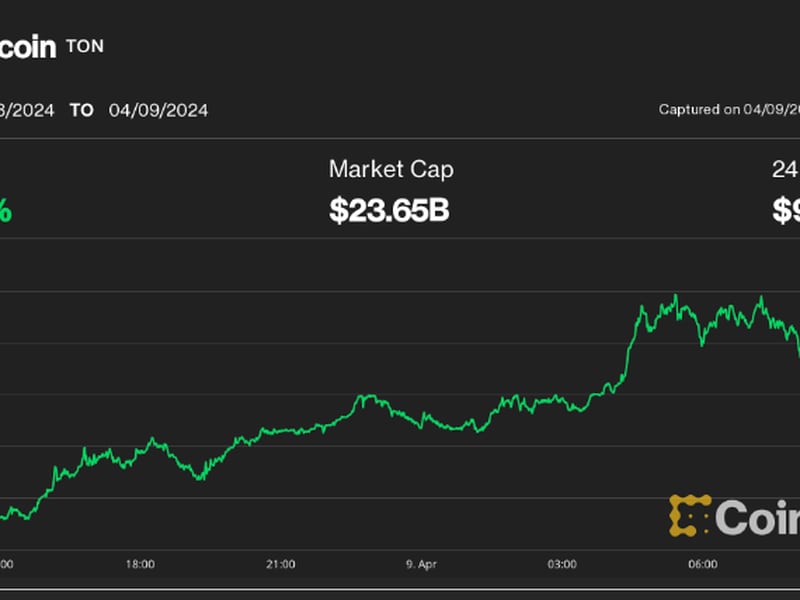This Year’s Top Ten Crypto Narratives
This Year’s Top Ten Crypto Narratives
This post is part of CoinDesk’s 2019 Year in Review, a collection of 100 op-eds, interviews and takes on the state of blockchain and the world. Ryan Selkis is the co-founder and CEO of Messari. The following is an excerpt from Messari’s “Crypto Theses for 2020.”
1. “Hyperbitcoinization vs. Digital Gold.” While you’ll see a great deal of chatter about the coming decade’s hyperbitcoinization if you read The Bitcoin Standard (which I recommend) and follow the hardcore libertarian crypto crowd on Twitter, it’s a mistake for everyone to keep hammering away at this currency narrative. It’s threatening and unnecessarily and prematurely hostile to the powers that be. It’s a harder narrative to grok for newcomers, and everyone that converts to crypto ends up hoarding bitcoin like digital gold, anyway. Practically speaking, we should go after the $7 trillion gold market first, see how that goes, then move up the value chain to the next milestone if we get there. Bitcoin as everyday cash will also always suck in a world with stablecoins because of the tax consequences of spending, and the public audit trail those transactions leave.
2. “Long Bitcoin, Short the Bankers.” In a world where every transaction has an associated cost basis and tax event, the real killer app for the industry is in collateralized lending. This is especially true in the U.S. with its crypto hostile tax regime. Rather than spend crypto and deal with accounting headaches, it’s becoming feasible to lend bitcoin in return for (tax free!) dollars out, at reasonably low interest rates! Of course, there is always liquidation risk in these products if your collateral declines in value, but borrowing against 10-20 percent of your holdings, for instance, is plenty of cushion for most people, especially if they’d be otherwise looking at 20-30 points of incremental capital gains tax liabilities in a sale. It’s nonsensical to take the tax hit on a big purchase (e.g. a down payment on a new house) if you can avoid selling. I’m waiting for one of the crypto tax software companies to collaborate with the lenders and create a calculator that runs through this logic for their customers. Borrow money from your own bank.
3. “Stack Sats & Earn Crypto.” I’m disappointed in what has become of Earn.com and Streamium. (You’d have to be OLD to remember Streamium.) The potential to monetize your time via crypto is significant (an Airbnb or Uber for “spare time” is capital efficient), but it hasn’t hit yet. The potential for streaming metered payments is also there (telemedicine, international consulting, and of course, porn), but that hasn’t clicked either for some reason. I’m shocked we haven’t seen a BIG specialized payroll company that offers bitcoin payouts as a percentage of your paycheck (though Coinbase may be working on it). In the meantime, we put together an easy overview at Messari of how to earn “free bitcoin.” Perhaps the easiest method today is Lolli, a browser extension that sends users bitcoin rewards for online shopping. Honey just sold to PayPal for $4 billion. Lolli could be on a similar trajectory in the next bitcoin bull cycle.
4. “Unbank the Banked.” I love this quip. (I believe it originated with the OmiseGo team in mid-2017.) It’s SPOT ON. There’s building tech for the disenfranchised, who often need financial services, but don’t make tremendously compelling early customers because of their low CLV (customer lifetime value). Then there’s building tech for those who are on the inside already, but feel like they may be on the way out: the misfits, the tinkerers, and the dissidents. We desperately need more success stories from Latin America, and the Middle East, and other emerging or unstable markets, particularly in regions where the rule of law is weaker and there are security risks associated with having a healthy bank account. Bitcoin took off in the U.S. in large part because Wences Casares, Silicon Valley’s “patient zero,” was a successful entrepreneur from Argentina with a superhero backstory and a stunt that caught the attention of the rich. Bitcoin caught fire in the U.S. because he passed $250k of bitcoin around a table of Silicon Valley power brokers at an exclusive 2013 dinner, not because someone at the party bought LSD on Silk Road (ok, ok, maybe it was both).
The only crypto communities that will survive in the long-term will have strong memes.
5. “Missionaries vs. Mercenaries.” The only crypto communities that will survive in the long-term will have strong memes. On the flipside, most attempts to bribe developers and users with airdrops and developer grants will fail (many already are), and most attempts to recruit insiders to a cause with pre-sale discounts and the (diminishing allure) of token flips will bring dysfunction and gridlock to projects that otherwise may have had a chance. We’re starting to see some teams come to terms with this reality. Stellar just burned 50 percent of its token supply because they quite literally can’t give it away. The EOS “cartel” has likely led to irreparable damage in that protocol’s reputation in developer circles (why build on infrastructure that will get hijacked by ruthless investors). And I’m predicting another bloodbath for privately funded token networks that come to market in 2020. We’re also intentionally avoiding coverage of many new competitive Layer 1 blockchains in these theses for this same reason: the vast majority are simply not interesting from a narrative standpoint.
6. “Bitcoin is a Platypus.” Blockchain Capital’s Spencer Bogart had one of the all-time classic analogies for Bitcoin in a 2017 post: the platypus. He writes about the platypus’s history:
“The platypus is perhaps the most bizarre creature on the planet. It’s a venomous, egg-laying, duck-billed, beaver-tailed, otter-footed mammal. Those things simply aren’t supposed to go together. In fact, when leading scientists first read accounts of the platypus, they dismissed it as a joke – and for good reason: the platypus is a seemingly impossible animal that combines features from three different animal classes and four different animal orders. … Even once the platypus was broadly accepted as a real and legitimate animal, classification provoked arguments: What type of animal is it? As it turns out, the platypus isn’t good at being a duck, it’s not good at being an otter, nor is it good at being a beaver or a reptile. The platypus is, however, great at being a platypus! In the end, the platypus was so distinct that scientists had to create a new animal category to accommodate its unique features. The platypus is a category creator.”
Bitcoin can be used for payments, has provable scarcity like a commodity, can split like a stock, and serves as a foundational protocol for other types of value transfer. We’d do well to capitalize on the limited time bitcoin has left being considered a punch line. When someone in power says “This isn’t money, it sucks as money. No one accepts it!” You should say, “You’re right!” When they say, “This isn’t digital gold, it sucks as a store of value.” You should say, “You’re right!” Please, please, please, let us hide in plain sight for one more bull run that gets us too big to fail.
7. “The Revolution Needs Rules.” I wrote last year that I thought Gemini’s controversial campaign was brilliant. A year older, wiser, and more disgruntled has made me an even bigger fan of the messaging, though perhaps my punch line is different than that of the Winklevoss twins. I believe they were trying to convey that Gemini is a regulated exchange that follows the law and sets the standard for what compliance should look like in crypto investment products. Good for them, but I take a less supplicant stance. When I think “The Revolution Needs Rules” I don’t think of placating U.S. regulators so much as I do of training a rag-tag militia. If we want to be better than the incumbents, then token teams: start disclosing insider sales; exchanges, clean up your wash trades; wallets, learn how to integrate with tax software systems and help your customers minimize their liabilities and pay only to Caesar that which is actually Caesar’s. The rules to the revolution shouldn’t all be defensive. Let’s play some fucking offense in the 2020s.
I told [a] room full of ‘decentralized world computer’ fanatics it was stupid for the Ethereum community to build non-financial applications.
8. “ETH is money.” Back in May I spoke at Ethereal and told the room full of “decentralized world computer” fanatics it was stupid for the Ethereum community to build non-financial applications. Being the reserve currency for DeFi / Open Finance was plenty good enough, and things like low-value collectibles, gaming, and distributed applications were a complete distraction whose use cases they should forfeit to other blockchains. This was a good take, and a lot of other ETH fans are starting to fly that flag. Ethereum could power most major stablecoins, synthetic securities, and the vast majority of the programmatic crypto lending and derivatives market. C’mon, fam, FOCUS. Rebuilding literally the entire financial system would be a big enough win. Push the kitties to a separate blockchain.
9. “Dissident Tech.” Web 3 got real fast. I thought it would take years to get excited about “decentralized internet” applications, but perhaps it’s sooner than we think, especially if it’s getting the satirical treatment on Silicon Valley. The continued exploitation of user data from tech behemoths (looking at you, Zuck) is making the concept of dissident tech – coined by Maya Zehavi – not only relevant, but cool. And new generations of users tend to gravitate towards “cool” tech. The demand for privacy and freedom of expression sparked a proliferation of crypto solutions over the past year-plus, from decentralized hardware networks like Helium and Orchid to privacy-focused browsers like Brave, which provide a glimpse of what’s to come with the Web 3 data stack. I’m not too bullish on the projects sporting token-first models, but upstarts that apply token models to applications that already work are more interesting. What’s also intriguing is the rate at which investors are defining their investment theses around dissident tech, emphasized by funds such as Cyberpunk Holdings and the mysterious Unknown Fund. Demand for privacy and censor-resistant solutions will require a shift in user behavior, but “the undercurrents are growing” in the current environment.
10. “Ok, boomer,” but for crypto. Crypto has some pretty good memes for insiders. But I’m not sure how effective our narratives will be during the political battles ahead. Are any of the nine narratives above capable of winning elections? Every time I look at that bald, conniving ape Sherman, I see someone who will lead and win the narrative battle against crypto with the most powerful people we cannot afford to lose. It strikes me there’s a generational divide we must recognize in that battle, a frustration we can capture and turn back against leaders like Sherman. An “ok boomer” that provides an effective counter to the damaging narrative that crypto is for “frauds, terrorists, and criminals.” I don’t know what it is, but I like these 500+ efforts to get it right. My favorite: “The rich got bailouts. The people got bitcoin.”
Disclosure Read More
The leader in blockchain news, CoinDesk is a media outlet that strives for the highest journalistic standards and abides by a strict set of editorial policies. CoinDesk is an independent operating subsidiary of Digital Currency Group, which invests in cryptocurrencies and blockchain startups.









